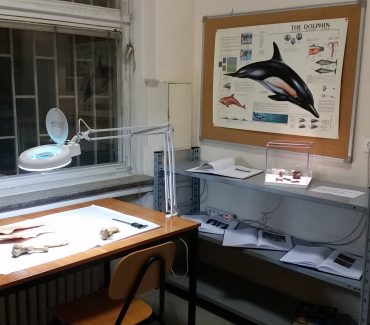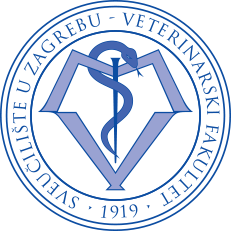
The Veterinary Faculty of the University of Zagreb has been involved for many years in monitoring the status of preservation of populations of protected animals. The first research related to establishing the status of the Mediterranean monk seal, dating from 1982. Research followed into whales, bears, wolves, lynxes and, most recently, otters.
Monitoring the status of the preservation of populations of protected animals includes research into living animals and their habitats, and post-mortem examinations of all available animals who have died in the wild. Over the course of past research, a large amount of important data was collected on the populations of protected animals in this country, relating to their numbers, their spread, the composition of their communities, genetic diversity, nutrition, mortality, morbidity, bio-accumulations of heavy metals, and the influence of anthropogenic factors. In the research, valuable material was collected, comprising skeletons, and tissue and organ samples. All the materials are accompanied by photographic documentation and detailed records. Precisely these data are what make our collection exceptionally valuable and unique. Apart from scientific research, the preserved material is also used for teaching purposes in five subjects in the integrated under-graduate and graduate course in veterinary medicine. All research and storage of materials from protected animals are undertaken with the permission of the competent ministries of the Republic of Croatia.
The working collection of protected animals, in which these materials are kept, serves as storage, but also as a working facility for scientific, teaching and professional work. Visitors are able to receive a large amount of information about our protected animals and how their preservation is monitored.
For the sake of learning more about the morphology of fish, a group of teachers from the Institute of Anatomy, Histology and Embryology and the Institute of Biology and Pathology of Fish and Bees, are extending the collection of bone preparations from fish, founded by Prof. Zvonimir Kozarić. The collection today contains 232 partial or complete skeletons of freshwater and saltwater fish, with the relevant data. The skeletons are used for teaching purposes for one mandatory and two elective subjects in the integrated under-graduate course in veterinary medicine. Further, the preparations are used as comparative material in scientific and professional research in the field of archeozoology, and in order to monitor the process of ossification and early detection of the occurrence of pathological changes in fish skeletons on fish farms. In line with the introduction of studies in English and the arrival of students from other parts of the world, it is intended to enrich the collection with species that do not exist in Croatian waters.
The collection of morphological preparations of protected animal species

 Faculty of
Faculty of 